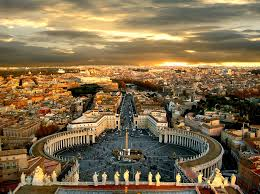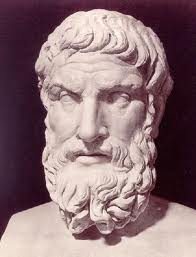I was looking at some of the titles received in the Collection Services area and noticed a volume that brought to mind the story of Grenfell and Hunt.
In 1896, supported by the Egypt Exploration Fund, these two British classicists journeyed to Egypt in search of papyri. One hundred miles south of Cairo, around the village of el-Behnasa they noticed curiously-shaped sand mounds that did not look like natural formations. After some digging they realized they were in the village’s garbage dumps. But in this rubbish, over a period of five years, they gradually unearthed 500,000 papyrus rolls and fragments, the world’s largest cache of papyrus manuscripts.
At the end of the nineteenth century, when Grenfell and Hunt were digging, El-Behnasa was a small wind-wept desert village, but it once was Oxyrhynchus, a prosperous Greco-Roman city. It was ruled by the Romans, but the written and spoken language was Greek. Oxyrhynchus (“sharp-nosed”) was named for a species of Nile fish that in Egyptian mythology devoured the genitals of Osiris, Lord of the Dead. The papyri written in Arabic, Coptic, and Latin; but mostly in Greek. They packed the papyri in conveniently-shaped Huntley and Palmer biscuit tins (700 of them) and placed the tins in wooden crates. The crates were taken by camel to the port of Alexandria and then shipped to Oxford. The papyri then had to be carefully cleaned, related fragments pieced or matched together, and then deciphered. It is taking decades. Among the finds: an almost complete text of Euclid’s Elements, school exercise books, private and official letters, fragments of works by Sophocles, Menander, Sappho, a biography of Euripides, religious texts including parts of the Gospels, and thousands of legal documents.
The discoveries are described and reported in The Oxyrhynchus papyri, published by the Egypt Exploration Fund. Images of the fragment(s) are presented on one page with translation(s) and annotations provided on the opposite. The first volume was published in 1896; I was looking at volume 78 that had just been received in Collections. The Library has every volume published since 1896.
Arthur Surridge Hunt, disheartened and depressed, following the death of his only son from complications following minor surgery, died shortly thereafter in 1936.
Bernard Pyne Grenfell had suffered several nervous breakdowns before he was diagnosed with paranoid schizophrenia. He was admitted to the Murray Royal Institution for the Insane in Perth, Scotland and died there in 1926.
Genfell, Hunt and their successors submitted detailed reports about the archeological process in Reports to the Egypt Exploration Fund. The Library has many of those Reports.
The earliest images or representations of el-Behnasa are the etchings and drawings of Vivant Denon, an artist who accompanied Napoleon on his “expedition” to Egypt.
Denon’s works are in Rare Books and Special Collections.
Hugh MacLennan’s doctoral dissertation at Princeton was on Oxyrhynchus
Phoebe Apperson Hearst, convert and promoter of the Bahai faith and mother of William Randolph, was a benefactress supporting Grenfell and Hunt’s travels and excavations to Egypt, through the Egypt Exploration Fund…..but that’s another story.
Regards, from my office “in the quiet and still air of delightful studies”
 Diagram Prize
Diagram Prize And finally, on 21st of April (Easter Monday) I celebrated Parilia (the name given to the annual festival celebrating the founding of Rome) by looking at some guidebooks and maps to the city daydreaming about when I would return. And because it wasn’t built in day, Rome is 2767 years old.
And finally, on 21st of April (Easter Monday) I celebrated Parilia (the name given to the annual festival celebrating the founding of Rome) by looking at some guidebooks and maps to the city daydreaming about when I would return. And because it wasn’t built in day, Rome is 2767 years old.
